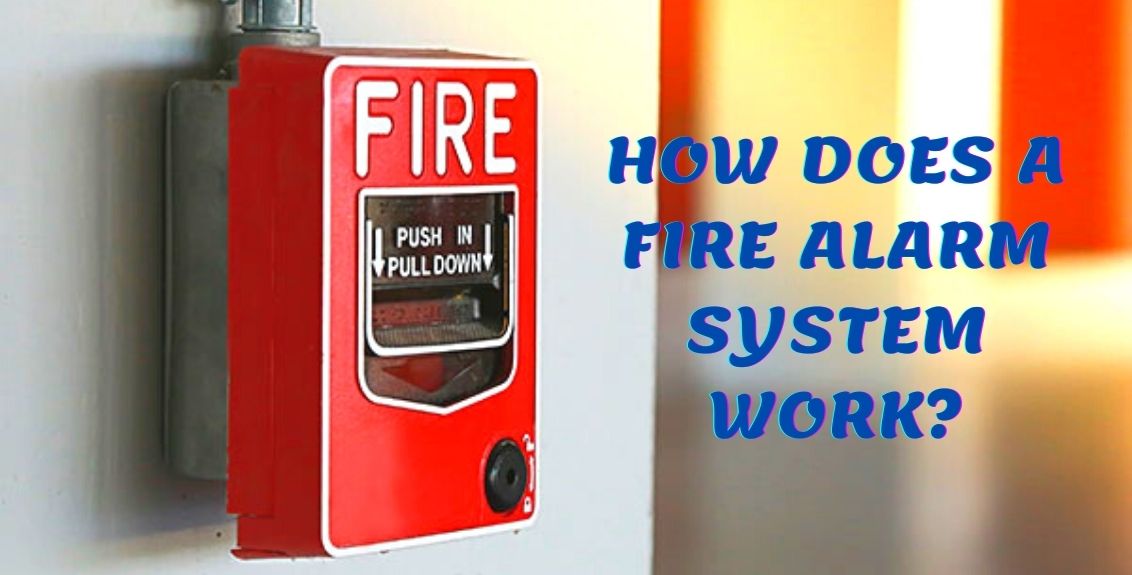If you own, handle, or are making any type of commercial building, you are good all too aware of the codes which needed your building(s) to have a working Fire Alarm System.
Yet many do not realize how these systems work and frequently mix them with individual fire protection equipment, such as Fire Sprinklers or smoke detectors. But fire alarm systems are a far more extensive and complex path to fire protection than any appropriate device.
In this article, you will be easily understood the function and primary components of a fire alarm system and the basics working principles of the fire alarm system.
What is the Purpose of a Fire Alarm System?
In the most simplistic terms, the role of a fire alarm system is to distinguish fires and alert both structure residents and emergency workers from a centrally controlled and regulated area.
These models also self-monitor, comprehending wherever indoors the building(s) alarms originate from and recognizing when errors occur in wiring and attachments that may hinder the system from serving properly.
In reality, a fire alarm system has four key functions: detect, alert, monitor, and control. They use an advanced network system of devices, materials, and control panels to perform the four functions.
Which are the Parts of a Fire Alarm System?
As stated above, a Fire Alarm System is a combination of many separate parts, each with its different function. Learning what these parts are and how they work collectively is needed to better understand how the system works as a whole.
The accompanying is the five key elements that make up several fire alarm systems:
- Initiating Devices: opening plans are the part of the alarm system which detects smoke or fire. These systems connect smoke detectors of various kinds, heat symbols of various kinds, sprinkler water flow sensors, and pull stations.
- Indicating Appliances: symbolizing things are the part of the system that articulates the alarm and alerts homeowners to the fire hazard.
- Indicating instruments combine horns, chimes, bells, and in some situations, even strobe information for the hard of head and deaf. Most maximum of these models is designed loud so as not to be needed and to encourage everyone to leave the building immediately.
Where those who are deaf or hard of hearing are present, or code requires, strobe lamps are also used in connection with the various symbols so that there is a visible indication of the fire as well.
Fire Alarm Panel: the fire alarm control panel is the UI and central managing part of the models. It has shows revealing the current state (alarm or no alarm) of the fire alarm system and a touchpad, which presents onsite help to program, troubleshoot, level, and reset the system.
The fire alarm panel monitors and has a supervisory performance over all of the system’s beginning devices, indicating instruments, and all related communications ties, field wiring, and its circuit sheets and internal wiring.
It is also via the fire alarm provisions that a call is sent out to a monitoring company in the event of a triggered alarm so that pressure help is alerted.
Power Supplies: Power supplies hold main power from the wave, (2) 12V batteries as backup for 24 hours, and sometimes a generator as backup power for several fire alarm systems. The collections may be accommodated in either the control panel or in a separate area. The group will take over should the power fail, enabling the order to continue protecting the building from fire for 24 hours. A generator can provide power for longer periods of power interruptions.
Auxiliary Devices: many new devices can be connected to a fire alarm system to bolster a fire screen in a department.
The 3 States of Fire Alarm Systems
As discussed above, the fire alarm panel advises and indicates what state the arrangement is in at all times. For most orders, there are three states of operation: Normal, Alarm, and Trouble.
When all devices, machines, wiring, and systems are operating correctly, and no alarms are received, the system is operating in a Normal State.
When an initiating device is activated, the arrangement goes into an Alarm State. The indicating instruments will sound, alerting home residents to the danger, and the alphanumeric layout on the control panel will indicate from which region of the building(s) the alarm is beginning so that emergency workers can quickly return to the correct area.
Should a short or open process occur in the circuits joined the fire alarm panel and initiating devices, or within the panel’s wiring or zone cards, or if the system’s phone line system is not operating, then the system proceeds into Trouble State and is displayed on the control panel? The panel will designate which zone the effect is in, and a signal will sound to alert maintenance workers to the puzzle. While the guide is loud rather be heard, it is not nearly as loud as the indicating devices and will not be confused with an actual alarm.
How Do Fire Alarm Systems Catch a Fire?
The way a fire alarm system detects a fire is within its initiating devices, discussed above.
The fire alarm panel is connected to the system’s opening devices through either 2- or 4-wire circuits. This circuitry subtracts the control panel to monitor the state of its initiating means, usually by zones, identifying whether the materials are in normal or alarm mode. The instrument panel shows these presentations on its display panel.
When a fire starts, the smoke or heat will stimulate one of the initiating devices, or someone will initiate the manual pull station, warning the fire alarm system of the fire and putting it in alarm method.
What Occurs Once the Fire Alarm System is activated?
Once the system goes into alarm mode, two things should appear:
- The indicating instruments should sound the alarm, notifying everyone in the construction of the emergency.
- A call should go out via the system’s communications channels to the monitoring company.
In some fire alarm systems, it may also stimulate fire suppression systems to supports to fight the fire until emergency personnel visit.
Need Help?
Effectively shielding your facility against fire is central to defending the lives within it and the investment that it represents. But as should be evident, producing and implementing these orders is no easy assignment.
Don’t leave the safety of those in your house and your purchase up to chance. The team at Efficient Fire has been in the fire assurance business for over 21 years and has completed a wide variety of business types, from medical to manufacturing to education and retail.
Efficient Fire understands how the unique circumstances and proceedings of each business affect the fire protection needed to protect the facility and its people. Furthermore, they are experts in running with the codes and local officials to ensure that you won’t be hit with unwanted snags and fines in your home and inspection methods.
If you are getting ready to build, or if your contemporary fire protection system needs updating or support, don’t wait – give the authorities at Efficient Fire a call today.




